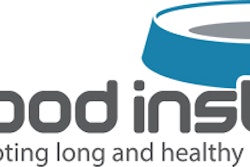The US Food and Drug Administration (FDA) held public meetings over two consecutive days in mid-May to discuss issues pertaining to petfoods. The first meeting invited comment on implementation of the FDA Amendments Act of 2007 (FDAAA), while in the second meeting the agency provided an update on its Animal Feed Safety System (AFSS).
Not much debate on FDAAA
I've discussed the ramifications of FDAAA on the government and industry previously (see Petfood Industry, December 2007 ). Among the mandates imposed under the new law, FDA has until September 2009 to promulgate new regulations relating to labeling, nutrition and ingredient standards for petfoods.
To assist in the process, FDA provided a series of questions in a federal register notice on which it sought input. The questions were open ended for example, "How can the feeding directions already present on the label be improved?" and "What kind of ingredient definitions would provide adequate information?"and touched on a wide array of pet food issues. It was hoped these questions would prompt considerable discussion at the meeting.
While reasonably well attended, the meeting did not spark much public debate. FDA purposefully had little to say (the meeting was to collect outside opinions, and assumedly the agency did not want to hinder that process by espousing any preconceived positions of its own).
Only three outside groups offered verbal comments:
- The Association of American Feed Control Officials (AAFCO) made some brief remarks regarding implications new federal regulations would have on the current state regulatory oversight of petfoods;
- The American Veterinary Medical Association voiced support for mandatory calorie content statements on dog and cat foods and put forth a very interesting proposal to require a "not evaluated by FDA" disclaimer on petfoods bearing health-related claims; and
- Defend Our Pets, a consumer advocacy organization formed as a result of last year's recalls, made the most extensive comments. The group presented a long list of suggestions, including some form of country of origin labeling (e.g., disclaimers when the product contains ingredients from countries that do not meet US standards) and "total elimination" of what it considers confusing and misleading labeling requirements (apparently from the AAFCO Model Pet Food Regulations). This organization also recommended actions beyond FDA's authority to implement on its own (e.g., mandatory recall authority, approval of grants by pet food companies to veterinary schools).
Scheduled for a full day, the meeting lasted only a couple of hours, even with a long break in the middle. Because the due date for submission of written comments on this matter was a month later, most organizations with a stake in the matter decided to withhold verbal comment until they could evaluate the comments of others and react at a later time.
In fact, the written comments, posted on www.regulations.gov ( re: Docket #FDA-2007-N-0442 ), are extensive and include input from many organizations, including the Pet Food Institute, the American Feed Industry Association and both the American College and Academy of Veterinary Nutrition.
Questions about AFSS
FDA has been working on AFSS for a number of years prior to passage of FDAAA in an effort to develop a comprehensive, risk-based approach to animal feed safety, including pet food safety. The agency has held a number of meetings on the subject over the past few years.
The May 2008 meeting was held to give an update on FDA's progress as it further refines the AFSS. Compared to the previous day's meeting on FDAAA, this meeting did last a much greater portion of the scheduled full day, primarily because FDA gave a number of presentations that prompted some questions from the attendees.
A key point of progress included a revised draft of the AFSS framework document ( http://www.fda.gov/cvm/AFSS3rdDraftFramework.html ). It identifies gaps FDA sees in the present oversight of animal feed safety and proposes means by which those gaps can be addressed.
For example, FDA considers lack of a comprehensive list of all ingredients allowed in animal feeds as a part of its own regulations to be a deficiency. However, the recently signed memorandum of understanding between FDA and AAFCO that allows the former greater oversight of the latter's ingredient approval process, as well as plans to finalize and implement the generally recognized as safe (GRAS) notification rule, is proposed to help address this gap.
Much of the meeting focused on FDA's continued efforts to rank the relative risk of chemical and microbiological feed contaminants for the purpose of establishing, in part, enforcement priorities and allocation of resources. This is accomplished by a process of assigning scores to rate the potential health consequences of and likelihood of exposure to various contaminants, which eventually results in a number that can be compared to those calculated for other contaminants. Unfortunately, the very detailed presentations at the May meeting on how to do the ranking do not appear to be posted on the agency's website as of the time of this writing.
Separate petfoods from feed?
AFSS is intended to address petfood as well as livestock feed safety. To me, this makes sense, as it would allow for a more effective and efficient program to the benefit of all. Interestingly enough, Defend Our Pets is adamantly opposed to grouping pet food with feed in the system. Notwithstanding that AFSS has been in development since 2003, the consumer group believes AFSS would "dilute the intent and authority" of FDAAA.
In fact, while FDA is currently trying to extend and incorporate the FDAAA mandates into the system, Defend Our Pets apparently perceives an AFSS that includes petfood to be little more than a veiled effort to diffuse attention away from the petfood industry.
















